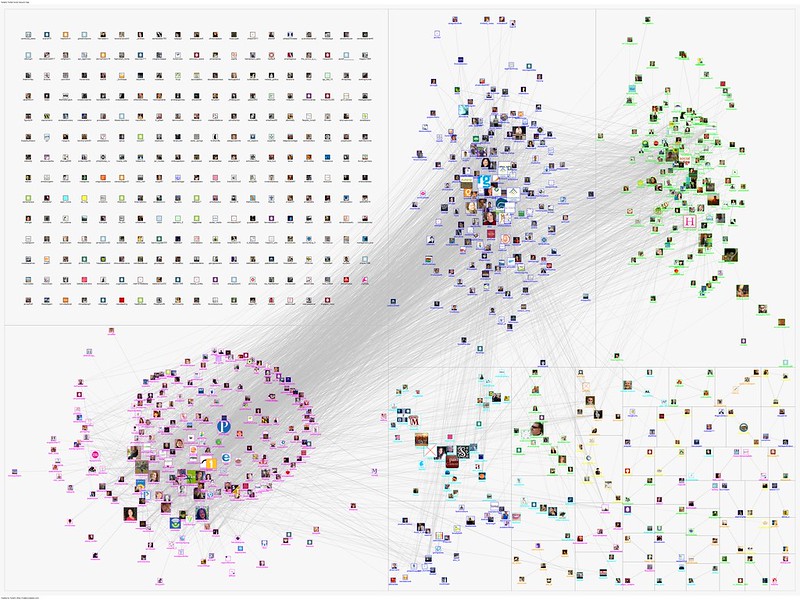The legacy collections in our oral history archive reflect the Oral History Research Office’s (OHRO) focus on “great men” in business history and philanthropy in its early years. From the Carnegie Corporation of New York to the Ford Motor Company to McGraw Hill publishers, interviewing the elite while also drawing on narrators throughout the organizational hierarchy provides a rich testament to a number of business and philanthropic practices, as well as raises ethical questions about oral historians performing work-for-hire for corporations.
In this guest blog post by, Liane Carlson, Associate Director for Institutional Funding and Sponsored Research at Barnard College, provides additional context for these collections. Thanks to Liane for giving permission to reprint her post, which is a compelling regular feature in Barnard’s funding newsletter for faculty.

The History of American Philanthropy
The great foundations we all know today–the Rockefeller Foundation, the Russell Sage Foundation, the Carnegie Corporation–all came from the great fortunes of the Gilded Age. In fact, foundations are so tangled up in the Gilded Age and Progressivism, with the time period’s characteristic mixture of squalor and glamor that it’s more common than not to start the story of American philanthropy there and not spend, oh [checks watch] a year-and-a half building up to the great battles between the robber barons and the federal government over whether foundations should exist at all. And it’s true that the great fortunes behind the great foundations matter, but they’re also better understood as part of a broader movement toward a search for scientific principles for philanthropy.
In the 1860s, charity was a piecemeal, local affair, not entirely dissimilar to the patchwork of laws the Tudor Poor laws tried to standardize in the wake of the English Reformation. There were local charities among churches and within particular ethnic communities, poor houses, orphanages, and individual requests to wealthy individuals for support. And the elite, white Protestant upper class despised it. The wealthy hated the constant requests for charity, the reform-minded intellectuals abhorred the inefficiency of disconnected charitable institutions that allowed individuals (in theory) to go from funder to funder to funder receiving money for their problems, and the budding social scientists considered charity to be a way of treating the symptoms of social dysfunction rather than the cause and theory creating a class of “paupers.” For that matter, the people requesting charity weren’t terribly fond of the system either, knowing full well that by accepting charity they were reinforcing the belief that immigrants and recently freed enslaved people couldn’t stand on their own…
This is the general milieu out of which the early efforts for a more “scientific” approach to philanthropy emerged. One of the leading figures of this movement was Josephine Shaw Lowell, sometimes called the “grand dame of social reformers.” Shaw Lowell embodied the sometimes contradictory combination of good intentions and censoriousness that characterized so much of Progressive reformers during the era. She was born in 1843 to a prominent abolitionist family. (Her brother, Robert Gould Shaw, led the first all-black battalion of troops during the Civil War and encouraged the men he led to refuse their pay until it equaled that of white soldiers.) Josephine Shaw married a businessman named Charles Robert Lowell in 1863. Shortly after their marriage, her husband joined the Union army and within a year was killed in battle. A month after his death, Shaw Lowell gave birth to their daughter.
Newly widowed, she moved to Staten Island to live with her family and became a prominent business- woman and reformer. She was an ardent anti-imperialist and had in some ways a thoughtful attitude toward charity, noting, “If the working people had all they ought to have, we should not have the paupers and criminals. It is better to save them before they go under, than to spend your life fishing them out afterward.” The goal was not to alleviate poverty but prevent it.
It’s an attitude that still has plenty of cache in current philanthropy. Shaw Lowell, unfortunately, coupled her interest in uprooting poverty with naked disdain for those who had already “gone under,” calling them alternately “worthless men and women” and “vicious and idle.” At various points, she pro- posed imprisoning all women under thirty who had committed misdemeanors or born at least two illegitimate children and advocated seizing the very poor, and committing them, “until reformed, to district work-houses, there to be kept at hard-labor, and educated morally and mentally.”
In 1876 Samuel Tilden…appointed her Commissioner of the New York State Board of Charities. During her tenure, the Board established the New York State Custodial Asylum for Feeble-Minded Women,” explicitly designed to prevent “feeble-minded” women from reproducing. It was a key moment in one of philanthropy’s signature projects during the Gilded Age–eugenics.
The digital exhibition, Meddlesome Practices, illustrates issues in business oral history methodology, as well as the uses of oral history as a primary resources.